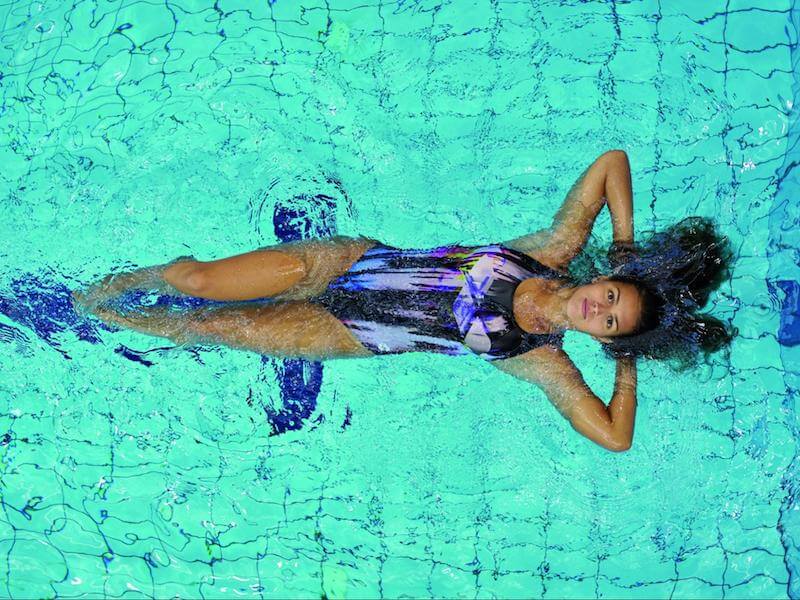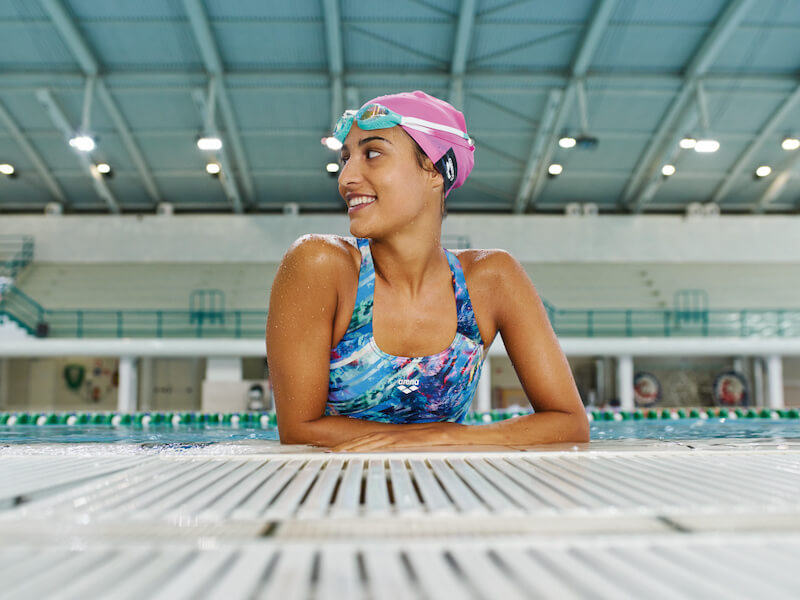Swimming After Giving Birth: 6 Tips to Get You Motivated
Some new mothers head back to the swimming pool after giving birth and seem to pick up right where they left off. For others, getting into a routine is more of a struggle. Maybe you have little time or energy, or it’s discouraging to have to stop and rest constantly because it feels like you’ll never get back to your pre-pregnancy fitness level.
While it’s not always easy to get back in the swim routine after giving birth, exercise is important. Today, we have some motivational tips and tricks to help you get back into swimming after giving birth. But before that, we’ll also cover when it is safe to start swimming postpartum and go over the benefits.
When Can I Start Swimming After Giving Birth?
Your doctor can provide the best medical advice about when you can safely start swimming after giving birth. Every woman’s body is unique and will respond to giving birth in different ways. Therefore, it is best to consult your doctor directly before jumping in the water.
As a general rule of thumb, you should wait until after your six-week check-up before you resume swimming, as this will allow your body to appropriately heal before entering the water. This will provide enough time for the natural vaginal bleeding, called lochia, to stop. When the vaginal discharge stops, it signifies your body is recovering properly.
The reason you’ll want to wait to swim after giving birth is to reduce the risk of infection. Infection can occur when bacteria enter the body, causing a uterine infection before the cervix is closed. Another threat of infection is if you have a scar that is not yet healed from a C-section.
Consult your healthcare professional with any questions about swimming after giving birth, or wait until your postnatal check-up to be sure your body is healed before entering the water. The healing process, and how soon you can resume swimming, will vary depending on whether you had a vaginal delivery, cesarean section, or episiotomy. Your doctor will understand best when your body is ready to resume swimming activity.
The Benefits of Swimming After Giving Birth

Swimming is an excellent activity for your health, and it can be a great activity for you to perform after giving birth. It is a low-impact exercise that will help to improve your physical and mental health after pregnancy.
Mayo Clinic suggests physical exercise after pregnancy can benefit you in the following ways:
- Contributes to weight loss
- Tones your muscles, including your abdominal muscles
- Increases your energy levels
- Contributes to stress relief
- Promotes a healthy sleep schedule
- Decreases the effects of postpartum depression
Swimming can also help to develop your pelvic floor muscles. The low-impact nature of swimming will aid in the recovery of your pelvic floor because the muscles will be under less pressure.
Swimming offers an excellent form of exercise to restore your fitness level. If you swam for exercise before pregnancy, it is great for your mind and body to get back into a familiar exercise routine. It will also help to restore your pre-pregnancy fitness level.
Even if you are new to swimming, the benefits on both your physical and mental health will be rewarding as you feel your fitness level increase and your mood and energy levels elevate.
6 Motivation Tips for Swimming After Giving Birth

Intellectually, you know you ought to make exercise a priority, as it will help you feel more energetic, and the health benefits more than justify the time investment. But that realization isn’t always enough to get you out the door. Here are some more concrete tricks you can use when your motivation waivers.
1. Hold Yourself Accountable
If you really want to make swimming a priority, put it on your schedule just like any other appointment, and don’t let yourself cancel unless you have a really good reason. Training with a friend and having someone count on you, or making a commitment to take a class and paying a fee upfront, can help motivate you when you’re looking for excuses to stay home. You can also post your workouts to Facebook or another online platform, so you’ll feel accountable to (and get support from) your online community. Or really go all in and put money on the line with an app like stickK or Pact.
2. Reward Yourself
Swimming may not be enjoyable for its own sake at first if your fitness has really deteriorated. If your intrinsic motivation is low, create some positive extrinsic motivation by promising yourself a reward. Maybe it’s a healthy treat after each workout, a new swimsuit after a few weeks of regular training, or permission to watch your favorite TV show on days you go to the pool.
3. Set Manageable Goals
First, identify why you want to swim. Do you want to lose the baby weight? Get back to swimming faster laps? Enjoy some me-time? Understanding your objectives can help you find ways to motivate yourself accordingly. If your overall objective seems overwhelming, break it up into bite-size pieces that you can tackle each week: lose just a bit of weight, shave a little off your lap time, swim a bit farther before resting, etc.
4. Add Variety
If you’re one of those people who can do the same workout time after time without getting bored, more power to you. But if you feel like you’re getting in a rut, or you’re no longer looking forward to your workout, you might need to think about changing some things. This could mean working on different strokes, adding a water aerobics or aqua cycling class, or alternating swim workouts with other sports.
5. Identify as Someone Who Exercises
We tend to create our own self-fulfilling prophecies, so make sure you think of yourself as a swimmer, not an ex-swimmer. Reinforce that identity by leaving your swim bag out where you can see it during the day. Try practicing visualization exercises of yourself completing fulfilling and rewarding swim exercises. If you swam before your pregnancy, visualize all of your favorite swim experiences from the past and focus on all the positive emotions that brought you to the sport to begin with.
6. Do What You Can
Some days you’ll have more time and energy than others. Remember that any exercise is better than none, so don’t throw in the towel if you aren’t able to complete a full workout. And don’t feel guilty if you need to skip a day; that doesn’t matter in the grand scheme of things. What’s important is to develop good habits and a healthy lifestyle. It’s easy to get so focused on taking care of your family that you put your own needs last, but exercising, along with eating well and finding effective ways to manage stress, are more important than ever now that you’re a mom.
Take Pleasure in Your Growing Fitness

While the first weeks postpartum might feel challenging for new moms, it is important to keep your mind on all the benefits a routine swimming exercise can bring you and your family. As your energy levels improve and you begin getting back in shape, you’ll be in a great mindset to take care of your new baby and yourself.
Be sure to view arena’s line of swimsuits for all your postpartum swimming needs. Choose from one-piece training suits, two-piece training suits, plus-size suits, or shaping suits.







